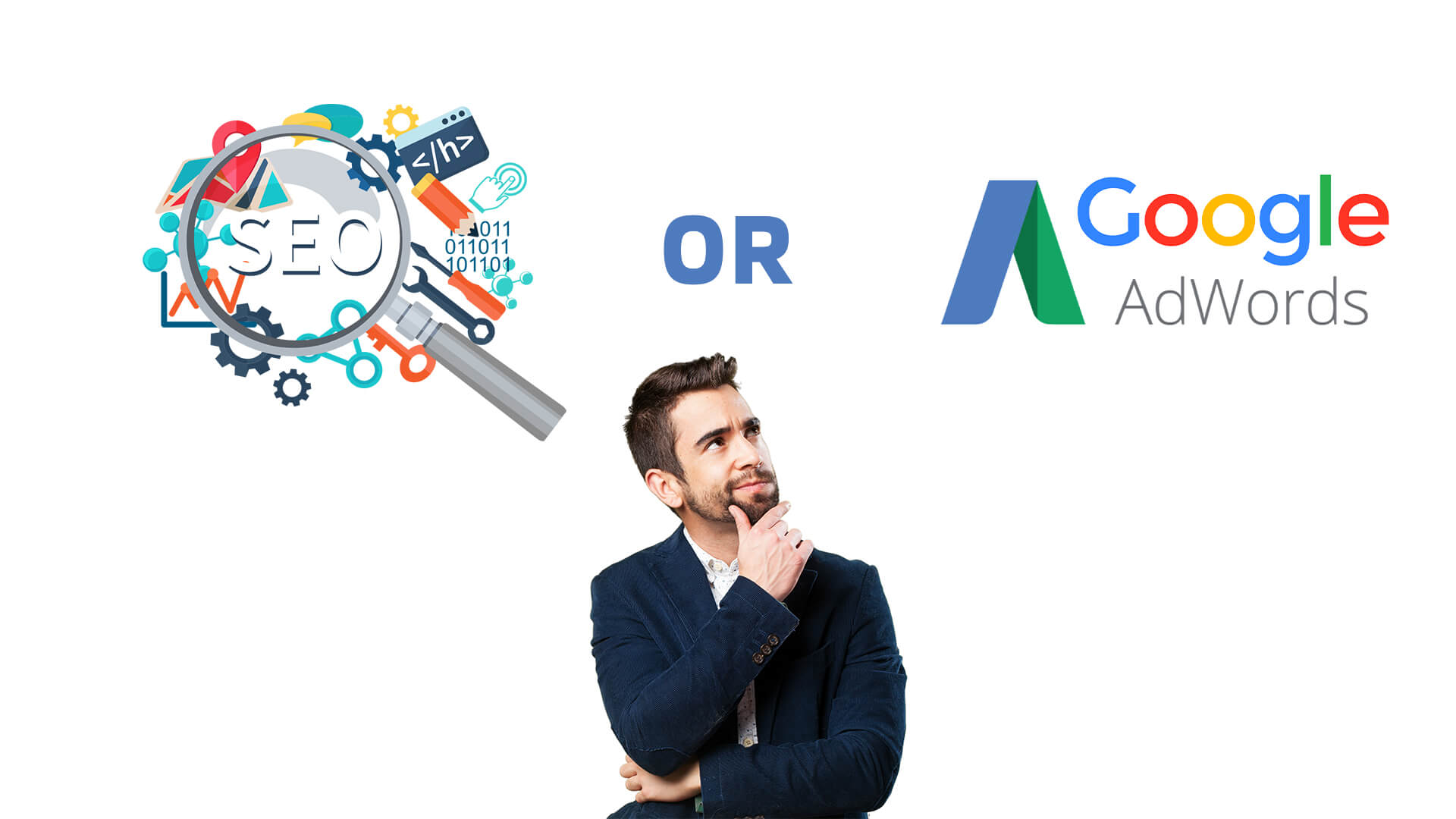In the ever-evolving landscape of digital marketing, businesses have numerous strategies at their disposal to enhance their online presence. Two of the most prominent methods are Search Engine Optimisation (SEO) and Google Ads. While both aim to drive traffic to your website, they operate in fundamentally different ways. This post will delve into the nuances of SEO and Google Ads, helping you decide which strategy—or combination of strategies—is best suited for your business.
What Is SEO?
Search Engine Optimisation (SEO) is the process of optimising your website to rank higher in organic search results on search engines like Google. SEO involves several tactics, including:
- On-Page SEO: Optimising individual web pages by incorporating relevant keywords, meta tags, and high-quality content.
- Off-Page SEO: Building backlinks and promoting your website through external sites to boost its authority.
- Technical SEO: Enhancing your website’s backend structure, including improving site speed, mobile-friendliness, and crawlability.
What Are Google Ads?
Google Ads, formerly known as Google AdWords, is Google’s advertising platform that allows businesses to display ads on Google’s search engine results pages (SERPs) and across its advertising network. There are various types of Google Ads, including:
- Search Ads: Text ads that appear at the top of Google search results when users search for specific keywords.
- Display Ads: Visual ads displayed on websites within Google’s Display Network.
- Video Ads: Ads that play before, during, or after videos on YouTube and other video partners.
Key Differences Between SEO and Google Ads
Organic vs Paid Search
SEO focuses on improving your website’s organic search rankings. Organic search results are the listings that appear naturally on SERPs based on their relevance to the search query. In contrast, Google Ads are paid advertisements that appear at the top or bottom of search results and on various partner websites.
Cost
SEO involves investing time and resources into optimising your website, creating content, and building backlinks. While the upfront costs can be significant, the long-term benefits often make it cost-effective. Google Ads, on the other hand, operate on a pay-per-click (PPC) model, meaning you pay each time someone clicks on your ad. This can lead to ongoing expenses, but it provides immediate visibility.
Timeframe for Results
SEO is a long-term strategy. It can take months to see significant improvements in your search rankings and organic traffic. However, the results are sustainable over time. Google Ads offer immediate visibility and can drive traffic to your website as soon as your campaign is live. This makes it ideal for businesses seeking quick results.
Pros and Cons of SEO
Advantages of SEO
- Long-Term Sustainability: Once you achieve high rankings, you can maintain them with regular updates and optimisations.
- Cost-Effectiveness Over Time: While initial investments can be high, the ongoing costs are relatively low compared to paid advertising.
- Builds Credibility and Trust: Organic listings are often perceived as more trustworthy than paid ads.
Disadvantages of SEO
- Time-Consuming Process: Achieving and maintaining high rankings requires consistent effort and patience.
- Requires Ongoing Maintenance: Regular updates and optimisations are necessary to keep up with algorithm changes and competitors.
- Algorithm Changes: Search engines frequently update their algorithms, which can impact your rankings.
Pros and Cons of Google Ads
Advantages of Google Ads
- Immediate Results: Your ads can start driving traffic as soon as they go live.
- Highly Targeted Advertising: You can target specific demographics, locations, and even the time of day your ads appear.
- Flexibility in Budget and Scalability: You can adjust your ad spend and scale campaigns based on performance.
Disadvantages of Google Ads
- Ongoing Costs: You need to keep paying for ads to maintain visibility.
- Click Fraud and Competition: Competitors might click on your ads to deplete your budget, and high competition can drive up costs.
- Temporary Results: Once you stop paying, your ads disappear, and so does your traffic.
When to Use SEO
Best Scenarios for Implementing SEO
- Building Long-Term Brand Presence: If you’re focused on establishing a strong, lasting online presence, SEO is essential.
- Limited Advertising Budget: SEO can be more cost-effective in the long run, making it suitable for businesses with tight budgets.
- Competing in Less Saturated Markets: SEO can help you gain a competitive edge in markets with fewer competitors.
When to Use Google Ads
Best Scenarios for Using Google Ads
- Needing Immediate Traffic and Visibility: For product launches, events, or sales, Google Ads can drive quick results.
- Launching a New Product or Service: Use Google Ads to generate buzz and attract early customers.
- Highly Competitive Industries: In industries where SEO is highly competitive, Google Ads can help you stand out.
Combining SEO and Google Ads
Benefits of Integrating Both Strategies
- Maximising Visibility and Reach: Using both strategies ensures you capture traffic from both organic and paid sources.
- Using Google Ads Data to Inform SEO Strategies: Insights from Google Ads can help identify high-performing keywords and refine your SEO efforts.
- Creating a Balanced Digital Marketing Plan: A combined approach allows for immediate traffic through ads while building long-term organic growth.
Case Studies or Examples
Successful SEO Implementation
- Example 1: A local bakery implemented SEO strategies and saw a 50% increase in organic traffic over six months.
- Example 2: An e-commerce site optimised for SEO and achieved top rankings for key products, leading to a 30% increase in sales.
Successful Google Ads Campaigns
- Example 1: A tech startup used Google Ads to promote their new app, resulting in 1,000 downloads in the first week.
- Example 2: A travel agency ran a Google Ads campaign for holiday packages, leading to a 40% increase in bookings.
Effective Combined Strategies
- Example 1: A fitness centre used SEO to build long-term visibility and Google Ads to promote seasonal offers, resulting in steady growth and peak traffic during promotions.
- Example 2: An online retailer integrated SEO for organic growth and Google Ads for targeted holiday campaigns, achieving a 60% boost in overall traffic.
How The Good SEO Agency Can Help
At The Good SEO Agency, we understand the intricacies of both SEO and Google Ads. Our team of experts can help you navigate these strategies to maximise your online presence. We offer tailored SEO services to improve your organic rankings and create compelling Google Ads campaigns for immediate visibility. Whether you need long-term growth or quick results, The Good SEO Agency provides comprehensive solutions to meet your business needs.
Conclusion
Choosing between SEO and Google Ads depends on your business goals, budget, and timeframe for results. SEO offers long-term sustainability and cost-effectiveness, making it ideal for building a strong online presence. Google Ads provide immediate visibility and highly targeted advertising, perfect for quick results and competitive markets. For many businesses, a combined approach leveraging both SEO and Google Ads can maximise visibility and drive consistent traffic. Evaluate your needs, experiment with both strategies, and find the right balance to achieve optimal results for your business.




